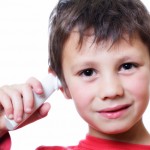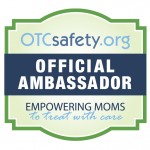 The flu, RSV, colds, Croup, strep throat, ear infections…they all have one thing in common…they can cause fevers. And as any parent can attest to, it’s often the fever itself that freaks us out more than anything and prompts many parents to call their child’s pediatrician or hustle them off to the emergency room.
The flu, RSV, colds, Croup, strep throat, ear infections…they all have one thing in common…they can cause fevers. And as any parent can attest to, it’s often the fever itself that freaks us out more than anything and prompts many parents to call their child’s pediatrician or hustle them off to the emergency room.
Fever is clearly not a parent’s friend.
Or is it?
You might be surprised to know, that in most cases, fever is actually a good thing. And when armed with the truth about fevers, you may just rest a bit easier and handle your child’s fever with ease.
Here are 5 must knows about fevers. Definitely remember these the next time your little one’s temperature starts to rise:
1. Fever is s symptom, not a disease. Remember, your child’s body is only reacting to an illness. That fever is letting you and your child know that they are sick. Consider it a a very obvious warning. Time to call it a sick day, drink some fluids, and rest. And by the same token, treating your child’s fever will not suddenly “cure” whatever infection he/she is currently fighting off. Think of it like disabling your car’s “oil change needed” light. Sure, you can turn off that light but it doesn’t negate the fact that your car’s oil still needs changing.
You can suppress that fever, but your child still needs time to rest and recover from her current infection.
2. Expect fever to wax and wane for 3-4 days. Most fevers will naturally persist for a few days before they completely go away. So yes, you can give that acetaminophen or ibuprofen, but expect that fever to bounce back up after a few hours. That’s completely normal.
3. The number on your thermometer is not as important as how your child looks and feels. I think most parents start to get a little panicked when they start seeing 103 and 104 F beeping back at them. But that number actually has no bearing on the seriousness of your child’s illness. So resist the urge to panic. Give your child a fever reducer to make him more comfortable and stay on top of his hydration. Fevers make the heart beat faster and increases your child’s insensible water loss (fluids lost through the skin and respiratory tract). So keep that water bottle handy.
4. Goal of fever treatment is to help your child feel better, not get rid of the fever altogether. Remember to treat your child, not the number on the thermometer. Surely, when your child’s temp starts rising to 102F or higher, they may need something to help them feel better. But also remember this: fever reducers will not always normalize your child’s temperature. It may bring it down a couple of degrees. And that’s both perfectly normal and okay. You have succeeded in making your child a little more comfortable during his/her illness.
5. A true fever is temperature of 100.4 F (38 C) or higher. Children’s temperatures naturally fluctuate throughout the day. So knowing what is a true fever is very important.
Some additional tips for dealing with fevers:
- Resist the urge to treat at the slightest temperature elevation. Remember, your child’s fever is serving a purpose. So unless you’re dealing with a 102 F or higher fever, let the fever run its course and keep your child comfortable by offering plenty of fluids.
- Stay calm and realize that when your child spikes a fever, it means his/her body is doing exactly what it’s supposed to be doing: mobilizing the troops (aka activating the immune system) to fight off his/her current infection.
Red flags: when you might want to start to worry a little
- Any infant less than 3 months old with rectal temperature of 100.4 F or greater needs to be seen by his/her pediatrician for evaluation. No matter what.
- Fever that persists greater than 5 days.
- Your child just doesn’t look well, is having difficulty breathing, or has had a febrile seizure.
- Your child’s fever is 105 F or higher. While this is not that common, some children can spike high fevers of 105 and 106. And while this is usually not harmful to your child (believe it or not), it still deserves a call in to your pediatrician and the right dose of acetaminophen or ibuprofen.
So really, fever is on our side. It serves a purpose. And really, it’s not the worst thing about your child being sick. I’m thinking it’s that darn cough, the stuffy/runny nose, or vomiting that really does us in.
Pin It







